Biomarker Analysis: Advanced Clinical SAS for Precision Medicine | 2025
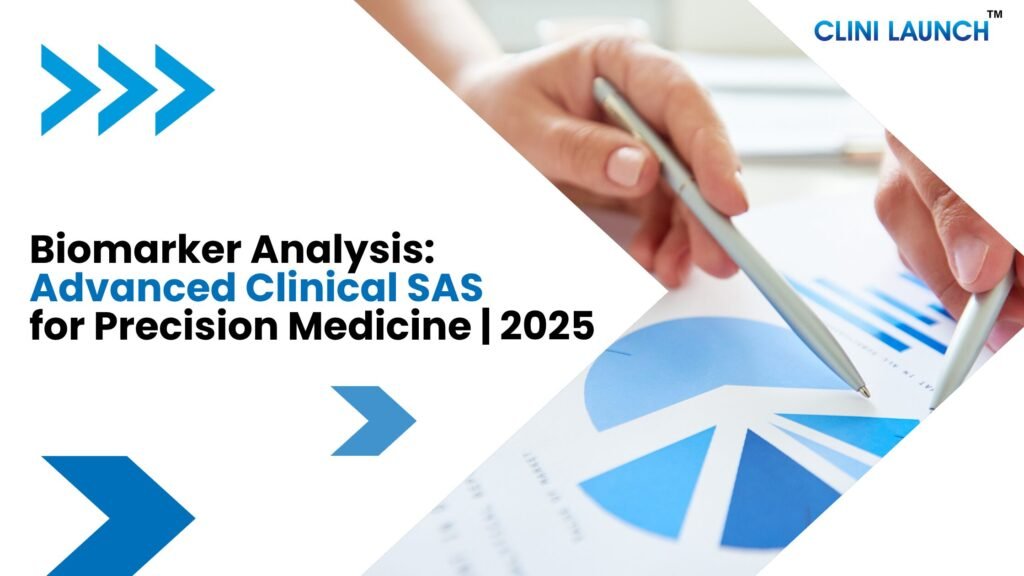
Learn about the challenges of biomarker analysis and discover how Clinical SAS provides the robust framework for advanced Biomarker Data Management. Read more.
The Ultimate Guide to SAS Programming in 2025: Clinical SAS Data
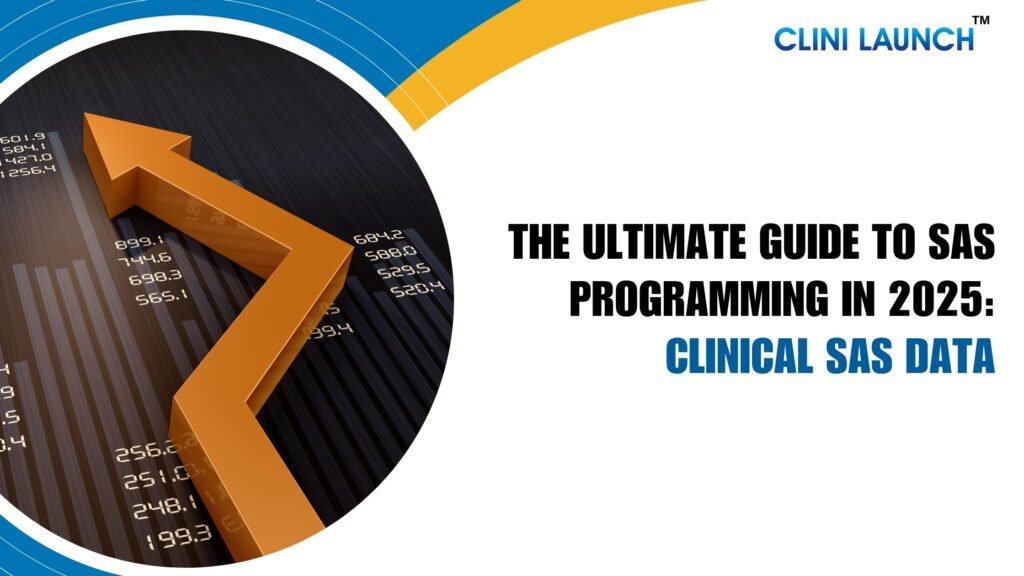
Master SAS programming for clinical research with our in-depth guide. Learn about SAS statistical software, accelerate your career with a SAS programming course.
Top 5 Productive Clinical SAS Project Ideas| 2025

Introduction Are you a clinical SAS professional and looking at adding real value to your portfolio or resume? Are you thirsty for knowledge and engaging yourself in learning new things along the way? Then we suggest you the list of Top 5 Clinical SAS Project Ideas that you can consider enriching your professional experience. The major learning part of Clinical Data management comes from actual “doing” the data management projects rather than from the print. Human brain is wired to learn things by observing and experiencing. When you start doing the projects. It helps in actually understanding the problem and applying your knowledge and skills in the field of clinical Trial Data management. This helps in greater retention, deeper understanding of clinical Data management. Enroll for “Clinical SAS Course” Clinical Data analysis with Python and SAS: In clinical trial data management, SAS is the most powerful tool in analyzing the data, producing figures and listings as part of clinical Study reports in the drug development process. It has been a fully validated standard software in data handling, analyzing and visualization in reporting the statistical analysis reports in CTMS Clinical Trial data management. Python, on the other hand, is a free software with tremendous functionalities. Python provides useful modules to access and handle Clinical SAS Programming datasets via SASPy bodules (NAKAjima 2018). Users can also access pandas and NUMPy, which are python’s powerful libraries, while on this project. Benefits: Read Our Blog Post: “Patients Retention Strategies: Boost Clinical Success” Automating Adverse Event Reporting with RPA and clinical SAS Credit: Aayan Ansari (Graphic Designer) Currently, in any pharmaceutical companies, adverse event reporting in clinical trial data management and CTs clinical trials are done manually by a designated group based on a clinical data management report. The annual reporting process is time consuming and error-prone because of constant back and forth steps and a lot of reviews among the different groups. This tedious process therefore needs an innovative and automated process that can streamline the adverse event reporting. The Robotic Process Automation RPA bot is developed to improve accuracy, efficiency, reduce manual entry errors and consistency in the reporting. The RPA bot can gather data from different clinical trial and CTMS Clinical Trial data management sources and feed it to Clinical SAS for further reporting. Benefits: This clinical SAS project Idea is best suited for proactively streamline the result posting process as it is accurate, time saving and can handle the clinical trial data effectively. As a clinical SAS professional, you will understand the basics of RPA automation and data collection from CTS clinical trials. Data visualization for Clinical trials with Tableau and SAS: In clinical trials, the clinical trial data management is used to analyse and monitor a lot of parameters including, research site characteristics and performances, patient enrollment, safety and follow up. Presenting and understanding this enormous amount of data can be difficult. Data visualization can be used to represent the same data in an interactive way. It also saves time with no decrease in accuracy compared to traditional static reporting. While preparing operational reports, any CROs use SAS Visual Analytics geo aps to monitor the data. The reports can have pie charts, bar charts,line charts, dropdown venus and detailed listing tables to showcase the parameters like patient status from screening to the end, subset enrollment, site reports. You can use Clinical SAS visual analytics to gather and process the data and conduct a statistical analysis. Then by using Tableau, you can create interactive, easy to understand dashboards to patient demographics, treatment results and various adverse event reporting. Benefits: The main objective of this Clinical SAS project idea is to help students create interactive yet accurate clinical trial data management reports, adverse event reports. The complex CTS clinical trial data can be represented in easy to understand and tie saving reports. Students can learn and create these dynamic, effective and engaging dashboards using Tableau. Enroll for “Clinical SAS Course” Building CDISC complaint datasets using SQL and Clinical SAS: Credit: Aayan Ansari (Graphic Designer) Clinical Data management demands accuracy and efficiency. It also should be compliant with the regulatory bodies. Now generating reports that are adopted to CDISc guidelines within the organizations or clinical research program, are far easier as the Congress approved the FDA safety and Innovation Act in July 2012. The organizations have seen clear advantages in adopting reports to CDISC standards. When data needs to be reported for regulatory submission, a substantial amount of time was spent on deciding the structure and variable names to be integrated in the reports. Now with this clinical SAS project idea, students can extract the clinical trial data from Clinical trial data management or clinical data management or CTS clinical trial database using SQL. Benefits: This unique hands-on clinical SAS project idea enables students to transform clinical trial data into CDISc compliant report forms. Students can also learn how to handle SQL. In this process, one can gain practical knowledge in extracting and managing data using SQL. The valuable skill of transforming the raw clinical trial data into CDISC complaint report adhering to the regulatory guidelines. A student can gain an in-depth understanding of CDISC and clinical data standards to comply with regulatory submission. Enroll for “Clinical Research Course” Survival Analysis using machine learning and SAS Credit: Aayan Ansari (Graphic Designer) Reporting Survival analysis in a clinical trial is complex but by incorporating tie to event information, survival analysis can be used as a powerful tool than just to examine whether the end point has occurred. Survival analysis uses a set of statistical methods for exacting the event occurrence and also the timing of events. By using Clinical SAS programming any of the challenges that are frequently encountered during the time-event data can be overcome. In this Clinical SAS project idea, students can generate an initial survival analysis report. Then using Python’s machine learning libraries to predict patient outcomes. Benefits: This clinical SAS project idea is an excellent opportunity for those who
Clinical SAS programming course – Invest in your future in healthcare
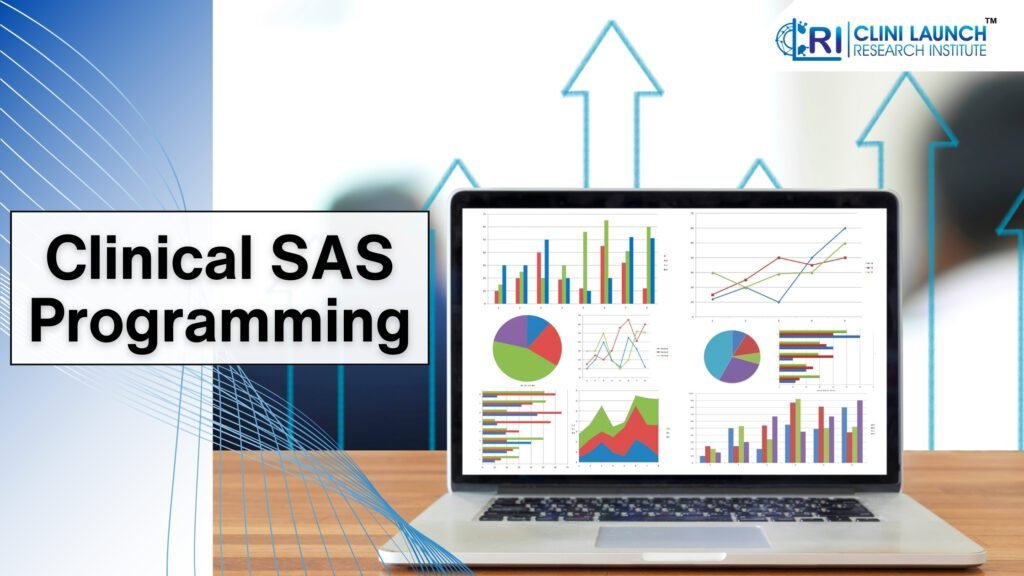
Are you prepared to use clinical SAS to begin your ideal job in clinical research? The healthcare sector is expanding quickly, which is driving up the need for qualified clinical researchers all across. Clinical SAS programming are essential to the success of clinical trials, which has in recent times have become the cornerstone of medical progress. These experts master how to handle and evaluate vital clinical trial data by utilizing the capabilities of the Clinical SAS software package. The Advanced Diploma in Clinical SAS offered by CliniLaunch gives people the theoretical and practical know-how candidates need to succeed in this fast-paced industry. With the help of this extensive training, one may become a highly sought-after clinical SAS programmer and contribute to important studies that will influence healthcare policies in the future. Are you ready to investigate this fascinating chance? Find out more about the clinical SAS training program offered by CliniLaunch and how it may further your professional goals. What is Clinical SAS Programming? Powering clinical research with data expertise Clinical SAS, an acronym for Clinical Applications of SAS, is a software package that is frequently utilized for data administration and statistical analysis. Clinical SAS is essential to maintaining the effectiveness and integrity of clinical trials in clinical research. Clinical trials are painstaking investigations that assess novel medications or medical equipment for safety and effectiveness. Clinical SAS gives researchers the ability to: The Clinical SAS platform effectively collects and arranges data from a variety of sources To guarantee accuracy and consistency, Clinical SAS makes data cleansing easier. To prepare data for analysis, it also permits data modification. Researchers can analyze clinical trial data and derive relevant conclusions regarding the intervention under study by utilizing the statistical tools provided by Clinical SAS Behind the scenes, the masterminds are clinical SAS programmers. To complete these responsibilities and provide the reports that are the foundation of fruitful clinical trials, they make use of their proficiency with Clinical SAS. Why pursue a Clinical SAS Career? In the biotechnology, contract research organization (CRO), and pharmaceutical industries, there is an extreme increase in the need for qualified Clinical SAS programmers. This increase is due to the increased demand for precise and efficient data analysis from clinical trials. One will benefit from great pay and fantastic career advancement chances in this exciting sector as a clinical SAS programmer With Clinical SAS, you may play a significant role in influencing the direction of healthcare. You immediately aid in the advancement of ground-breaking medical breakthroughs by organizing and evaluating clinical trial data. Picturize how rewarding it would be to know when candidates work is assisting in the creation of novel medications and therapies. One may genuinely impact the lives of numerous patients by pursuing a career in clinical SAS The ideal fusion of stability and growth may be found in clinical SAS. The healthcare and pharmaceutical sectors are well known for their consistency, which offer outstanding job security. The area of clinical SAS is continuously changing at the same time. As a clinical SAS programmer, you may build yourself a fulfilling and constantly expanding professional path with ongoing education and upskilling Strong clinical research is essential to the future of healthcare, and clinical SAS is a key component of this process. Gaining proficiency in this in-demand profession opens access to profitable employment in a growing industry. Senior research organizations, CROs, and pharmaceutical corporations all have a strong demand for clinical SAS programmers. This translates into competitive pay, solid job stability, and a career path full of opportunities for advancement. Who should consider clinical SAS training? Seeking a career change? If the goal is a fulfilling career that leverages interest in science and data analysis, then Clinical SAS training can be an excellent gateway into the exciting world of clinical research. This program equips candidates with the necessary skills to transition from a different field. Already have a science background? Do you possess a bachelor’s degree in science, statistics, or computer science? Then clinical SAS upskilling allows one to leverage their existing knowledge and gain specialized skills that are highly sought-after in the clinical research industry. This program can significantly enhance career prospects. The essential prerequisites: To enroll in Clinical SAS training, a bachelor’s degree in a healthcare, mathematics, or science field (or any related area) is preferred. Having basic computer literacy and a genuine interest in clinical research are also essential Now that we have explored the compelling reasons to pursue a clinical SAS career, let’s understand the specific benefits of why CliniLaunch’s Advanced Diploma in Clinical SAS program is a great upskilling options for individuals in the healthcare field. This comprehensive program is meticulously designed to equip you with the essential skills and knowledge to excel in this dynamic field. Benefits of CliniLaunch’s Advanced Diploma in Clinical SAS Unlock your full potential in clinical research with the comprehensive benefits of CliniLaunch’s Advanced Diploma in Clinical SAS. 1. Master the art of Clinical Data analysis The Advanced Diploma in Clinical SAS program from CliniLaunch offers an extensive curriculum that provides one with all the information and abilities one needs to succeed as a clinical SAS programmer. The course covers a wide range of Clinical SAS topics, including statistical analysis, report creation, data administration, and manipulation. By the time the program is over, candidates master how to use Clinical SAS to handle the complicated data from clinical trials. 2. Learn by doing – Practical skills for real-world success This curriculum puts a lot of focus on practical learning, going beyond theory. By taking on real-world case studies and projects supervised by professionals in the field, candidates gain invaluable expertise in mastering the concepts. Utilizing these virtual clinical trial situations enables you to put your newly gained Clinical SAS abilities to use in a real-world environment, simulating the difficulties you’ll face in your future work as a clinical SAS programmer 3. Flexible learning – Tailor your education to your needs CliniLaunch is aware that people with hectic schedules need to
Unique Power of Advanced SAS Techniques for Clinical Trial Data Analysis in 2024
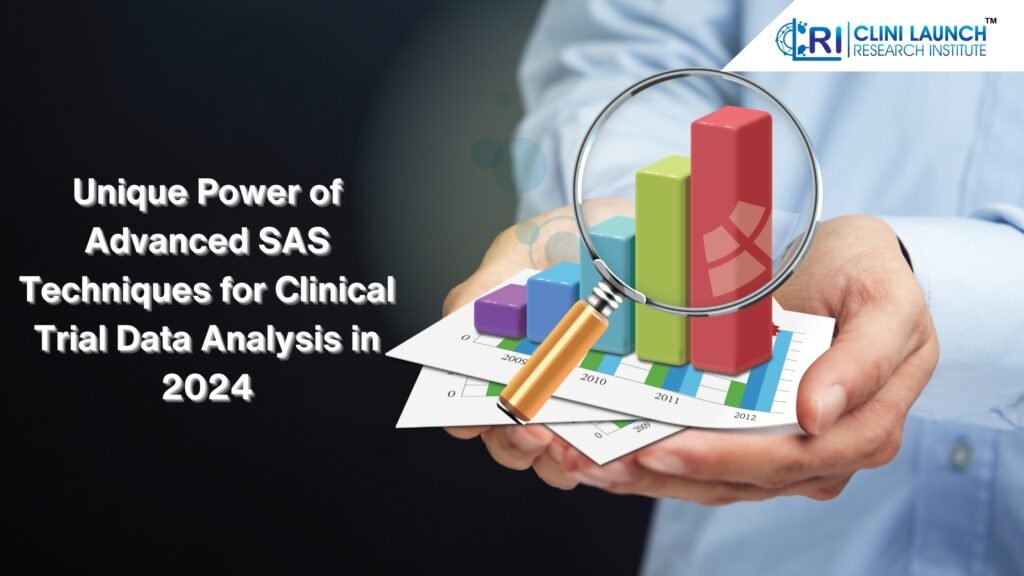
Clinical trials are the cornerstone of medical progress, meticulously designed experiments to evaluate the safety and efficacy of new treatments. But the true story lies within the data – the intricate details that reveal a treatment’s impact. This is where Advanced SAS Techniques with a powerful statistical software suite, steps in. Beyond the foundation of basic statistical methods, SAS offers a robust arsenal of advanced techniques to unlock deeper insights from complex clinical trial data. Advanced SAS Techniques Traditional statistical methods in SAS, like linear regression and ANOVA, provide a strong foundation for analyzing clinical trial data. However, complex trials often involve intricate relationships, longitudinal measurements, and non-standard outcomes. It is the place where advanced SAS techniques come into play. Join The Best Clinical SAS Training Institute in India | CliniLaunch Complex Data Modeling in SAS Clinical trials often involve a multitude of factors influencing outcomes. Traditional techniques might struggle to capture these intricate relationships. Advanced SAS offers robust tools for complex data modeling: Benefits of Advanced SAS Techniques By leveraging advanced SAS techniques, clinical trial data analysis transcends basic description and hypothesis testing. Here’s how: Join CliniLaunch to Advance Clinical SAS Statistical Techniques and Methods Resources for Advanced SAS Users The world of advanced SAS techniques is vast and ever-evolving. Here are some resources to equip yourself for success: Conclusion Clinical SAS, with its extensive library of advanced statistical methods and data modeling tools, empowers researchers to unlock the full potential of complex clinical trial data. By delving deeper into the nuances of the data, researchers can gain a more comprehensive understanding of treatment effects, ultimately accelerating medical progress and improving patient care. As clinical trials continue to evolve in complexity, advanced SAS techniques will remain an indispensable tool for unlocking the secrets within the data, paving the way for a healthier future.
Managing Clinical Research Datasets with SAS in 2024

As we know, clinical research drives medical progress and contributes as the best source in the healthcare industry. Through meticulously designed studies, research evaluates the safety and efficacy of new drugs, treatments, and devices. But behind every breakthrough lies a critical, often unseen, element: robust clinical research datasets. These datasets hold the key to unlocking valuable insights from clinical trials. This is where clinical SAS, a powerful statistical software suite, steps in. Clinical SAS offers a comprehensive set of tools for SAS data management ensuring data integrity and streamlining the research process. This blog post will delve into how SAS helps researchers create and manage clinical research datasets ultimately paving the way for automated reporting in SAS and insightful analysis. Why SAS for Clinical Research Datasets? There are several reasons to which SAS reigns supreme for clinical research data management. Following these reasons: Creating Clinical Research Datasets with SAS To build clinical research datasets using SAS involves 4 key steps. These are: Data Organization for Seamless Analysis Once the data is clean and transformed, it’s crucial to organize it efficiently. Here is where data organization in clinical studies comes into play. Clinical SAS offers several data structures for these purposes: The Importance of Data Management Clinical research data is precious. Here is how SAS helps ensure its integrity: Automated Reporting with SAS Clinical research hinges on clear and concise communication of findings. SAS empowers researchers with automated reporting capabilities: Conclusion Clinical SAS provides a powerful platform for creating, managing, and analyzing clinical research datasets. By leveraging its capabilities, clinical research can ensure data integrity, streamline workflows, and generate high-quality reports. Remember, robust clinical research datasets are the bedrock upon which medical advancements are built. With clinical SAS as your partner, you can ensure your research data is a strong foundation for groundbreaking discoveries. CliniLaunch offers a Clinical SAS course that offers in-depth knowledge and skills in the field of clinical research using SAS software and its applications. If you are interested in the field of healthcare and looking for the best courses or programs available in the field, visit: www.clinilaunchresearch.in.
Generate outstanding Clinical Study Reporting with SAS in 2024

Have you ever done clinical study reporting with SAS? You may answer it as no, I have never been into SAS report generation. Okay. Let me tell you, Clinical study reports are often generated as a part of the process to submit the applications for new medical trials or treatment to regulators. In a Clinical Study reporting (CSR) answer all the questions such as: These are all mandatory requirements that you need to take care of before the submission of clinical study reporting with regulatory measures for CSRs with ICH E3 structure. ICH E3 aims at establishing a single, core CSR format that can be accepted by regulatory authorities in all ICH regions. It can reduce the burden of compiling multiple reports for different regions. Here we listed down some of the regulatory requirements for Clinical Study Reporting: SAS in Clinical Data Management Clinical SAS is the foundation ensuring standard and trusted clinical data used to support strategic analysis. SAS can manage, transform and manage clinical data supporting CDISC data standards. The main advantage of using Clinical SAS in data management, users can quickly analyze large datasets in less time during its execution phase. It is a suite of integrated analytics capabilities such as forest clustering, predictive modeling, randon, etc. Unlikely, many companies offer extensive support with consistent quality assurance tests ensuring that the products released in the market are of high-standards. Learn to use SAS in Clinical Data Management, visit Clinical SAS Course. Generating Clinical Study Reporting Documenting information to make your audience understood is fundamentally essential for anyone. Once you understand the structure and data collection methodologies, you will be able to summarize and report your findings efficiently. Now you have the tool to succeed at writing programs, you can analyze data and create reports with SAS procedures, SAS DATA Steps, and SAS features such as the Output Delivery System (ODS) and the macro facility. Furthermore SAS report generation includes data processing techniques, statistical analysis for reporting, and report generation. Data processing Techniques Clinical SAS offers various procedures to import data from different sources such as CSV, Excel, or specialized clinical trial databases. Importing trial data into Clinical SAS is a common procedure that includes PROC IMPORT and PROC DATASETS. Data clearing and validation procedures ensure data accuracy and consistency where clinical SAS provides tools to identify and correct the missing values known as PROC MEANS, inconsistencies known as PROC CONTENTS, and outliers known as PROC UNIVARIATE. It involves manipulation and preparation of data for analysis. Transformation of data is the process that offers different functionalities to drive new variables like age groups, recording of data categories and merging datasets such as PROC SORT and PROC SQL. Statistical Analysis for Reporting Descriptive statistics summarizes patient demographics, baseline characteristics, and treatment distributions using procedures like PROC MEANS as a continuous variable, and PROC FREQ (categorical variables). Clinical SAS aids in adverse events safety analysis reporting during the clinical trials. The steps like PROC FREQ and PROC MEANS helps in the identification of the frequency and severity of these events. Efficacy analysis assesses the treatment effectiveness. Clinical SAS offers various statistical methods for hypothesis testing, like t-tests (comparing two groups), and ANOVA (comparing multiple groups). Report Generation Clinical study report generation requires efforts for the generation of informative tables to summarize the data analysis and its methodologies. To create tables, commonly used tools are PROC MEANS and PROC FREQ with descriptive statistics and frequency distributions. Visualization is important for clear communication using graphs and charts that require PROC SGPLOT to effectively represent the research findings. Creating comprehensive clinical trial reports requires integration of Output Delivery System (ODS) with text narrative combining statistical findings and results using clinical data presentation with clear explanations. By following these steps while utilizing clinical SAS procedures effectively, researchers can analyze, manage, and report on clinical trial data leading to a clear understanding of treatment effects and improved clinical development. Learn statistical Analysis and Reporting with SAS. Join Clinical SAS Program. Best Practices for SAS Programming Best practices for clinical SAS programming technique is a particular approach to achieve a level of approval by a professional association, authoritative entity, or published research findings. With successful best practices for clinical data presentation programming techniques, it translates into greater code readability, maintenance, and code reusability. Best practice programming techniques requires: Conclusion In conclusion, Clinical SAS plays a pivotal role in clinical study reporting by providing a suite of tools for analysis, clinical trial data reporting, and management. By following the guidelines of ICH E3 and clinical SAS programming best practices ensures that clinical study reports are accurate, comprehensive, and meet regulatory requirements. This allows researchers to effectively communicate research findings and to contribute effectively for improvement in clinical data management. Furthermore, if you are interested in a clinical research career or clinical SAS or want upskilling in clinical SAS software. Learn best practices of SAS Programming. Join CliniLaunch or fill up the form below.
4 Adaptable Steps for How to Get SAS Clinical Training and Placement in 2023
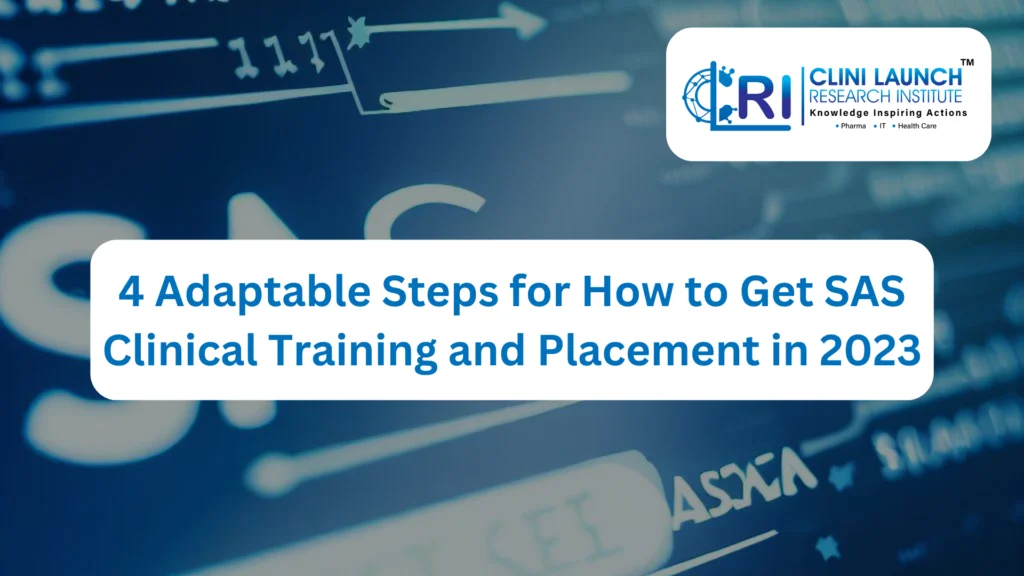
SAS is a powerful software that can be used for data analysis, reporting, and visualization in various domains, including the clinical research industry. According to SAS clinical training and placement market, the global healthcare market analytics was valued at $35.4 billion in 2022. However, the healthcare market analytics industry is expected to expand its market at a CAGR (Compounded annual growth rate) of 21.3% from the year 2023 to 2030. Moreover, SAS clinical programmers are in high demand as they can help design, develop, and validate clinical trial data sets and reports compliant with regulatory standards and guidelines. This blog will guide you in pursuing a career as a SAS clinical programmer. These are the four steps below to get SAS programming training and placement in 2023. Step 1: Learn the basics of SAS programming The first step to becoming a SAS clinical programmer is to learn the fundamentals of SAS programming, such as data manipulation, macro language, SQL, and report writing. You can enroll in a clinical SAS Programming training and placement course that covers these topics and prepares you for the SAS Base Programming certification exam. This exam tests your ability to import and export raw data files, manipulate and transform data, combine SAS data sets, create basic detail and summary reports using SAS procedures and programming logic errors, and identify and correct data and syntax. Step 2: Learn the concepts and standards of clinical research The next step is to learn the basics of clinical research theory and practice, such as the phases of clinical trials, the roles and responsibilities of different stakeholders, the types of study documents, and the ethical principles and regulations that govern clinical research. Before you proceed with the first step, you must familiarize yourself with SAS clinical training and placement cell. It would help to familiarize yourself with the Clinical Data Interchange Standards Consortium, such as SDTM (Study Data Tabulation Model) and ADaM (Analysis Data Model). These standards define how to structure, label, and document clinical data sets and metadata to ensure consistency and quality across studies. Step 3: Apply your skills to real-world projects The best way to master SAS clinical programming via SAS clinical training and placement is to apply your skills to real-world projects that simulate the tasks and challenges of a SAS clinical programmer. You can join a SAS training institute that offers hands-on training on study documents, CDISC standards, SDTM and ADaM programming, clinical trial reports and graphs, define.xml and reviewer’s guide creation, and more. You can also participate in mock interviews, tests, and assessments to evaluate your knowledge and skills and provide feedback and guidance. Step 4: Get certified as a SAS Clinical Trials Programming Professional The final step is to get certified as a SAS Clinical Trials Programming Professional by passing the Clinical SAS programming training and placement, which is the base Programming exam (which you should have already taken in Step 1) and the Clinical Trials Programming. Using SAS 9 exam tests your ability to access, manage, and transform clinical trials data; apply statistical procedures for descriptive analysis; generate tables, listings, and figures (TLFs) for clinical trials reports; validate clinical trial data reporting; use macro programming to automate programs; use SAS tools for metadata creation; use ODS statements for report generation; use graphics procedures for creating graphs; use SQL procedures for querying data; use advanced features of Base SAS software. Following these steps, you can get clinical SAS training and job placement in 2023. You can also benefit from the placement assistance offered by Clini Launch Research Institute in Bangalore, which can help you find suitable job opportunities with top companies in the clinical research industry. According to Indeed.com, the average salary of a SAS clinical programmer in India ranges from ₹ 4.5 lakhs to ₹ nine lakhs per year, depending on the company, role, and experience. Conclusion Clini Launch Research Institute provides SAS training and placement programs. This blog gives you the proper information regarding SAS clinical training and placement process to help you achieve your career goals and objectives. SAS clinical programming is a rewarding career that can help you make a difference in the healthcare sector by contributing to developing new drugs and therapies. Suppose you are passionate about data analysis and want to work in a dynamic and challenging environment. In that case, choosing Clini Launch Research Institute, the best clinical research institute in Bangalore for SAS clinical training and placement programming, is the right choice.
A Pure Guide to SAS Clinical Research Course for 2025
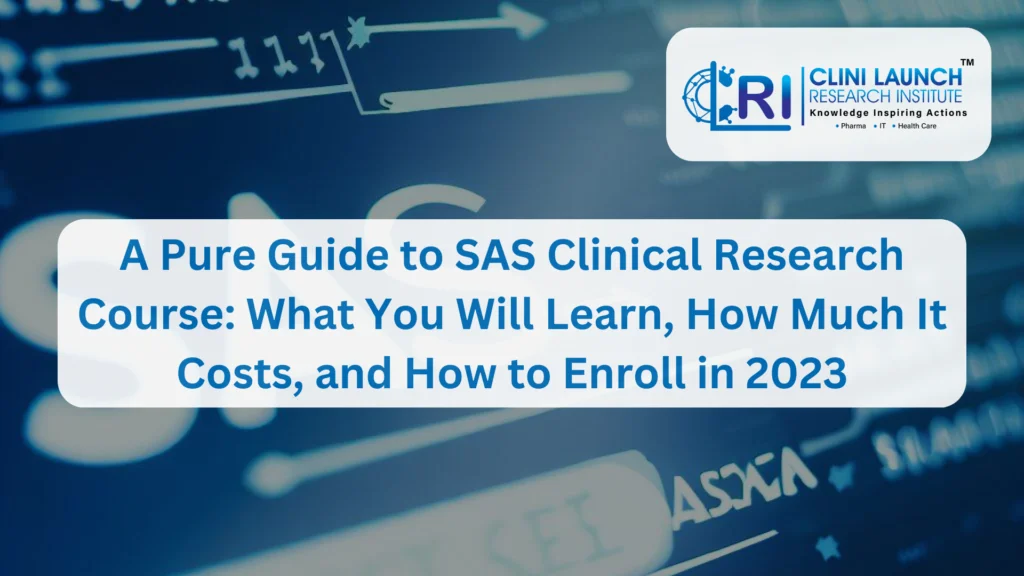
A Pure Guide to SAS Clinical Research Course for 2025
5 Special Benefits of SAS Clinical Trials Programmer Certification with Course, Cost, and Syllabus
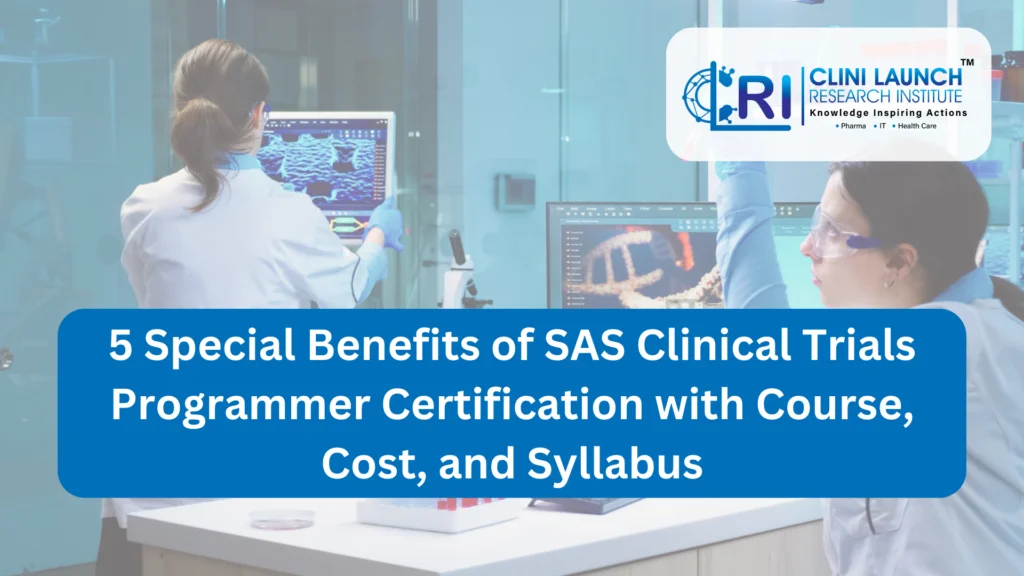
If you are looking for a rewarding career in the pharmaceutical industry, consider a SAS Clinical Trials Programmer Certification. A Clinical Trial Programmer uses SAS software to access, manage, transform, analyze, report, and validate clinical trial data. To get a SAS Clinical Trials Programmer certification, you must have a solid understanding of the clinical trials process and data structures and the skills to use SAS software for various tasks. One way to demonstrate your knowledge and skills is to earn the SAS Certified Clinical Trials Programming Professional credential. This blog will explain what is SAS Clinical Trials Programmer Certification, how to prepare for it, and what benefits it offers you. What is the SAS Certified Clinical Trials Programming Professional credential? The SAS Clinical Trials Programmer Certification of a Professional with Credential is one of the foundation-level certifications offered by Clini Launch Research Institute- CLRI. It is designed for programmers with at least six months of experience in clinical trial programming using SAS software. The clinical SAS exam consists of multiple-choice questions and short-answer questions that cover the following topics: The clinical SAS exam is an accelerated version of the A00-280 exam intended for candidates already holding the clinical SAS Certification Base Programmer for the SAS Certified Advanced Programmer for credentials. It consists of 50-60 multiple-choice and short-answer questions that cover the same topics as the A00-280 exam, except for the base and advanced programming skills. Both exams have a passing score of 68% and a time limit of 1 hour and 50 minutes. SAS and Pearson VUE administer them at authorized testing centers worldwide. How can you prepare for the certification? To prepare for the clinical SAS certification, you should have a solid understanding of the clinical trials process and data structures and the skills to access, manage, transform, analyze, report, and validate clinical trial data using SAS software. Clini Launch Research Institute offers several training courses and resources to help you prepare for the certification, such as: You can also ask for the guide of examination for Clinical SAS to Clini Launch Research Institute to review each exam’s objectives and sample questions. You can also take practice exams and quizzes from various online platforms to test your knowledge and identify your strengths and weaknesses. What are the benefits of SAS Clinical Trials Programmer Certification? There are five benefits of SAS Clinical Trials Programmer Certification such as: What is the course structure and cost of the certification? The course structure and cost of the certification depend on which method you choose to earn it. If you choose to take the clinical SAS programmer exam, you can enroll in one of the following tracks offered by Clini Launch Research Institute- CLRI: In addition to this course and certifications, you need to pay for your exam, which depends on which exam you take. What Is The Syllabus For SAS Clinical Trial Programmer Certification? The syllabus of the certification varies depending on which exam you take. If you take the A00-280 exam, you need to know about the clinical SAS certification syllabus given below. These are: Make a Difference in Healthcare: Join our Clinical SAS Course Now! If you take the A00-281 exam, you need to know about all these topics except for the following: Conclusion The SAS Certified Clinical Trials Programming Professional credential is valuable for programmers who want to advance their careers with SAS Clinical Trials Programmer Certification using SAS software. It requires a solid understanding of the clinical trials process and data structures and the skills to access, manage, transform, analyze, report, and validate clinical trial data using SAS software. To prepare for the certification, you should take advantage of the training courses and resources offered by Clini Launch Research Institute- CLRI and practice exams and quizzes from various online platforms. The certification can provide several benefits, such as enhancing your credibility and marketability, demonstrating your proficiency and commitment, gaining recognition and respect, increasing your chances of getting hired or promoted, and accessing exclusive resources and opportunities from SAS. If you want clinical trial programming certification and credentials, you can register for an advanced diploma or certification on CLRI- Clini Launch Research Institute website. Lorem ipsum dolor sit amet, consectetur adipiscing elit. Ut elit tellus, luctus nec ullamcorper mattis, pulvinar dapibus leo.
